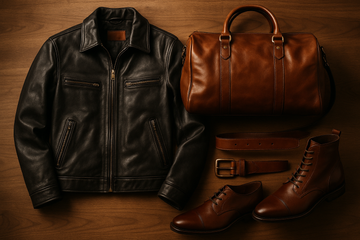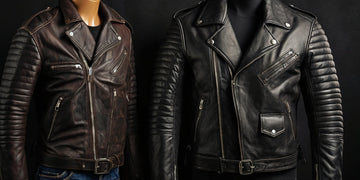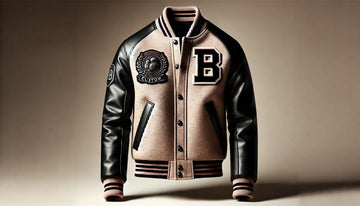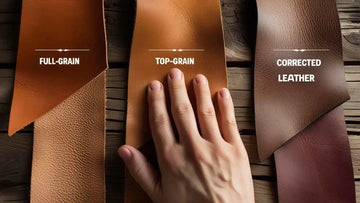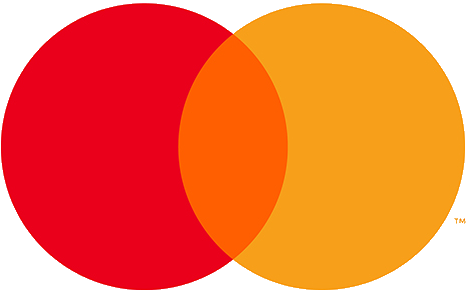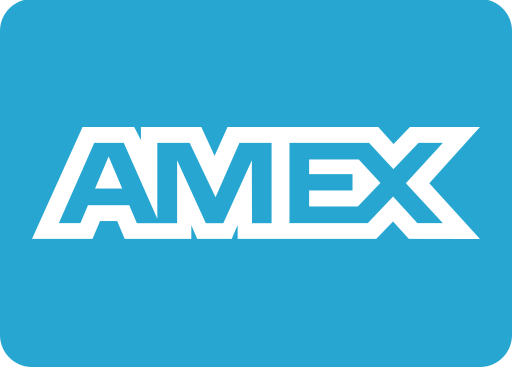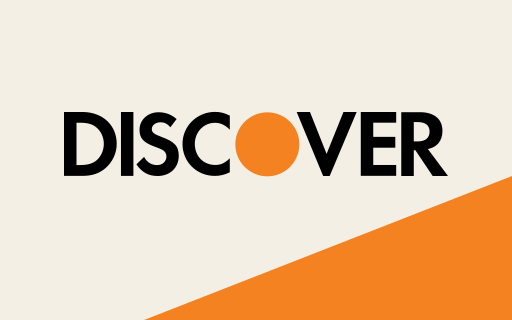Introduction
Shearling jackets have long been a staple in men’s fashion, offering warmth, durability, and timeless style. However, as ethical fashion gains momentum, consumers are increasingly concerned about sustainability in the leather and shearling industry. Is shearling ethical? How is it sourced, and what are the sustainable alternatives? This blog explores the ethical implications of shearling production, sustainable options, and how consumers can make responsible fashion choices.
What Is Shearling, and How Is It Sourced?
Shearling is the skin of a sheep or lamb that has been tanned with the wool intact. This results in a soft, warm, and durable material. Unlike traditional leather, which is stripped of its wool, shearling retains its natural insulation, making it highly desirable for winter fashion.
Shearling is often a byproduct of the meat industry, meaning that the animals are not specifically raised for their hides. This aspect makes shearling a more sustainable option than synthetic alternatives derived from fossil fuels. However, ethical concerns arise when examining farming practices, environmental impact, and animal welfare standards.
Ethical Concerns in Shearling Production
-
Animal Welfare – Ethical shearling sourcing ensures that sheep are treated humanely throughout their lives. Some farms implement high welfare standards, while others may engage in questionable practices. To make an informed choice, look for certifications such as the Responsible Wool Standard (RWS) or Leather Working Group (LWG) approval.
-
Environmental Impact – The tanning process of shearling involves chemicals that can be harmful to the environment if not properly regulated. Sustainable tanneries use eco-friendly techniques, such as vegetable tanning, to minimize pollution and reduce water consumption.
-
Carbon Footprint – Livestock farming contributes to greenhouse gas emissions. However, compared to synthetic alternatives made from petroleum-based materials, natural shearling has a lower environmental impact when sourced responsibly.
How to Identify Sustainable Shearling
If you’re looking for an ethical shearling jacket, consider the following factors:
-
Transparency in Sourcing – Brands that openly disclose where and how their shearling is sourced are more likely to follow sustainable and ethical practices.
-
Eco-Friendly Tanning Processes – Opt for brands that use vegetable tanning or chrome-free tanning, which reduces chemical waste and is safer for both workers and the environment.
-
Certifications – Look for sustainability labels such as OEKO-TEX, RWS, or LWG, which indicate adherence to ethical and environmental standards.
-
Longevity and Quality – Investing in a high-quality shearling jacket means you’ll keep it for years, reducing the need for frequent replacements and minimizing waste.
Alternatives to Traditional Shearling
For those who want the look and feel of shearling without animal products, sustainable alternatives are becoming more accessible:
-
Recycled Shearling – Some brands now repurpose vintage Shearling jackets , reducing waste and extending the life cycle of existing materials.
-
Plant-Based and Biofabricated Materials – Innovations in sustainable fashion have led to the development of plant-based textiles that mimic the warmth and texture of shearling.
-
High-Quality Faux Shearling – Many modern faux shearling options are made from recycled plastic or other eco-conscious materials, offering a cruelty-free alternative.
Brands Leading the Way in Sustainable Shearling
Several fashion brands are prioritizing sustainability in shearling production. Some well-known names include:
-
Stella McCartney – Known for pioneering sustainable luxury, this brand offers high-quality, cruelty-free shearling alternatives.
-
Patagonia – Focused on ethical sourcing and environmental impact, Patagonia’s shearling-inspired pieces use recycled wool and eco-friendly materials.
-
Eileen Fisher – This brand prioritizes ethical supply chains, ensuring that wool and shearling alternatives meet high sustainability standards.
FAQs About Sustainable Shearling
1. Is shearling a byproduct of the meat industry?
Yes, in most cases, shearling is sourced as a byproduct of the meat industry, meaning the animals are not raised solely for their hides.
2. How can I tell if a shearling jacket is ethically sourced?
Look for certifications like Responsible Wool Standard (RWS) and Leather Working Group (LWG), as well as brands that disclose their sourcing and tanning processes.
3. Are faux Shearling jackets better for the environment?
It depends. While faux shearling avoids animal use, many synthetic versions are made from petroleum-based materials, which have their own environmental drawbacks. Recycled or plant-based faux shearling is a more sustainable alternative.
4. How long do Shearling jackets last?
A well-maintained shearling jacket can last for decades, making it a worthwhile investment compared to fast-fashion alternatives.
5. What’s the best way to care for a shearling jacket?
Store it in a cool, dry place, avoid excessive moisture, and use a suede brush for cleaning. Professional cleaning is recommended for deep maintenance.
Conclusion
Sustainable shearling fashion is no longer just a trend—it’s a necessity for conscious consumers. By choosing ethically sourced shearling, eco-friendly tanning processes, and responsible brands, you can enjoy the warmth and luxury of shearling without compromising on sustainability. Whether you opt for natural shearling from ethical sources or explore innovative cruelty-free alternatives, your fashion choices can make a positive impact on the environment and animal welfare.
When purchasing a shearling jacket, always research the brand’s sourcing policies, look for sustainable certifications, and prioritize quality over quantity. By making informed decisions, you contribute to a more responsible and ethical fashion industry while enjoying timeless, stylish outerwear.


